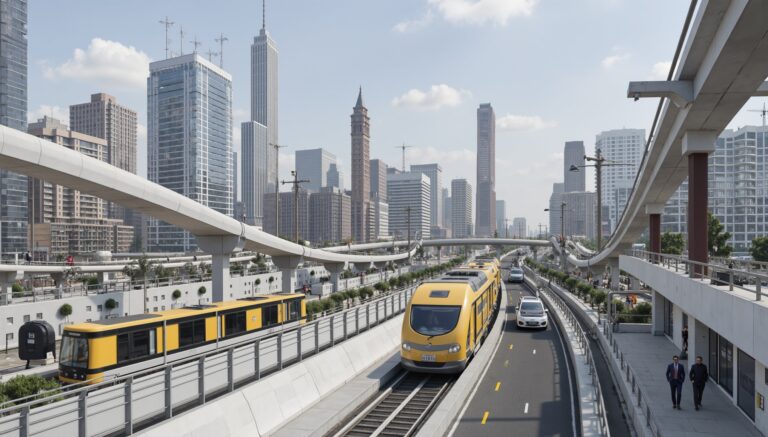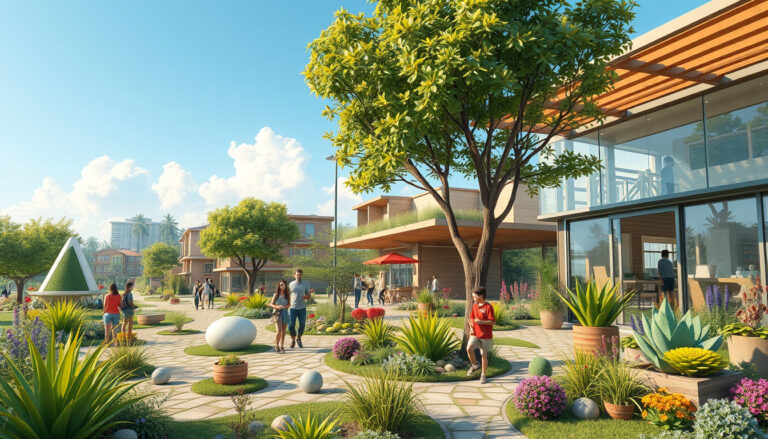When considering an investment in urban real estate, understanding the nuances of urban property location becomes paramount.
Location isn’t just about the physical address; it’s about the myriad factors that influence property values, rental income potential, and overall growth prospects.
The age-old adage ‘location, location, location’ rings true, especially in bustling urban environments where opportunities and challenges can coexist.
In this comprehensive guide, we will delve into the essential elements of urban property location, discuss why it’s vital for real estate investments, and equip you with the tools you need to analyze neighborhoods effectively.
Whether you are a first-time investor or looking to expand your portfolio, this guide will illuminate the path to selecting the ideal urban property location that aligns with your investment goals.


Analyzing Urban Neighborhoods: What to Look For
When exploring the prospects of investing in Costa Rica real estate, understanding the nuances of urban property location is essential for making informed decisions.
Urban neighborhoods not only offer proximity to amenities such as schools, hospitals, and shopping centers, they also serve as microcosms of the country’s vibrant culture and lifestyle.
Look for areas with development potential, high demand for rentals, and access to public transportation.
It’s also crucial to consider the safety and security of the neighborhood, as well as the local community’s overall vibe.
Analyzing these factors can greatly enhance your investment strategy and ensure that you tap into the dynamic urban real estate market that Costa Rica has to offer.
Emerging Trends in Urban Property Locations
In the vibrant landscape of Costa Rica real estate, emerging trends in urban property locations have become a focal point for investors and homebuyers alike.
With cities like San José, Heredia, and Alajuela experiencing rapid growth, urban property location has become increasingly desirable due to their accessibility, modern amenities, and strong community infrastructure.
Buyers are gravitating towards these urban centers not only for the convenience of urban living but also for the opportunities in residential and commercial investments.
As more individuals seek a balance between work and leisure, the demand for urban properties that provide easy access to public transportation, educational institutions, and healthcare facilities continues to rise.
Moreover, the recent developments in sustainable living spaces within these urban property locations are attracting environmentally conscious consumers, further driving interest in Costa Rica’s blossoming real estate market.

Tools and Resources for Location Analysis
When considering investing in the vibrant world of Costa Rica real estate, one of the most critical steps is conducting a thorough location analysis, particularly for urban property location.
Fortunately, there are several tools and resources available that can assist in making informed decisions.
Online real estate platforms such as Realtor.com and local websites like Encuentra24 provide extensive listings and location insights, enabling potential buyers to compare properties based on their desired amenities and neighborhoods.
Additionally, utilizing Google Maps and real estate analytics tools can help visualize urban property locations, assess commute times, and explore nearby facilities like schools, hospitals, and shopping centers.
Furthermore, engaging with local real estate agents who have intimate knowledge of the area can offer invaluable guidance and firsthand insights into the dynamics of urban property location in Costa Rica.
By leveraging these resources, investors can uncover the right urban property that meets their lifestyle or investment goals, ensuring a sound investment in this beautiful tropical country.
Making the Final Decision: Weighing Your Options
When it comes to investing in Costa Rica real estate, urban property location plays a crucial role in your decision-making process.
With the vibrant cities like San José, the coastal charm of Jacó, and the serene environment of Escazú, each area offers unique benefits that cater to different lifestyles and investment goals.
Prospective buyers should carefully weigh their options by considering not only the immediate surroundings but also the accessibility to amenities, public transport, and potential for property value appreciation.
Engaging with local real estate experts and thoroughly researching the urban property location can help illuminate which area aligns best with your personal and financial aspirations, ensuring a well-informed investment in this beautiful Central American paradise.
Frequently Asked Questions
What are the key factors to consider when analyzing urban property locations?
When analyzing urban property locations, key factors include proximity to public transport, local amenities (like schools, grocery stores, and parks), crime rates, demographic trends, and economic growth indicators in the area.
Why is location so important in real estate investment?
Location is crucial in real estate investment because it directly impacts property value, rental potential, and future appreciation.
A prime location can lead to higher demand, better returns on investment, and less risk during market downturns.
What emerging trends should investors look for in urban property locations?
Investors should look for trends such as urban migration, the development of mixed-use spaces, the rise of remote work influencing location desirability, and increased demand for sustainability features in neighborhoods.
What tools and resources are recommended for analyzing urban property locations?
Recommended tools include real estate analytics platforms (like Zillow and Redfin), demographic research tools (such as the U.S.
Census Bureau), local economic reports, and neighborhood guides that provide insights into amenities and transportation.
How do I make the final decision on an urban property location?
To make a final decision on an urban property location, weigh your options by considering all analyzed factors, assessing your investment goals, consulting with local real estate experts, and potentially visiting the neighborhoods to get a feel for community dynamics.





